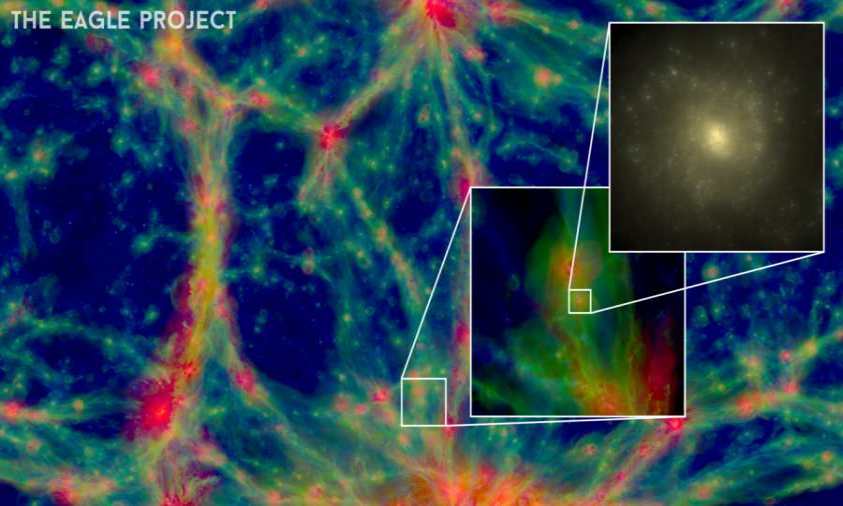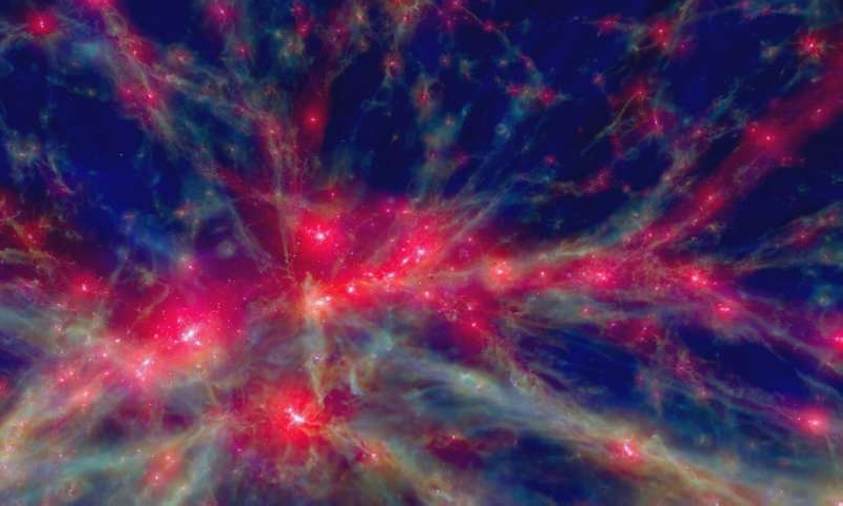Lecture: Weaving the Cosmic Web
About this event :
A journey of discovery and exploration of the structure of the Universe.

The image above is a slice through the simulation volume, with the intergalactic gas colour coded from blue to green to red with increasing temperature.
Hot gas has temperatures of more than 100,000K, and is contained with dark matter structures that host galaxies. Such hot gas can be detected in X-rays.
The insets zoom into a galaxy like the Milky Way, showing first its gas, and then its beautiful stellar disc: it looks remarkably similar to observed spirals.

Using the EAGLE simulations, researchers have made predictions for the mechanisms that lead to the creation of the supermassive black holes.
The merging of these black holes creates gravitational waves that have been detected a few months ago for the first time.
Read more here:
Dr Pete Edwards, Director of Science Outreach, Durham University Department of Physics, will take us on a journey of discovery and exploration of the structure of the Universe.
Our local star, the Sun, is just one of the many billions that form the vast collection we call the Milky Way
Galaxy Observations with large telescopes tell us there are at least as many galaxies in the Universe as there are stars in the Milky Way.
Furthermore, these galaxies are not randomly distributed throughout the Universe, but form a spidery network that has a filamentary structure dubbed the ‘cosmic web’.
This talk will take the audience on a journey to discover and explore the structure of the Universe.
We will traverse the web and show how, using supercomputers, cosmologists and the EAGLE Project are closer to answering the question:
- “How did the Universe evolve into the beautiful place we see today?”
- “How do galaxies form?”
- “What part does Dark Matter playin the formation of galaxies?”
Note: EAGLE (Evolution and Assembly of GaLaxies and their Environments) is a simulation aimed at understanding how galaxies form and evolve.
The EAGLE simulation models the formation of structures in a cosmological volume, 100 Megaparsecs on a side (over 300 million light-years). This is large enough to contain 10,000 galaxies of the size of the Milky Way or bigger, enabling a comparison with the whole zoo of galaxies visible in the Hubble Deep field for example. This website contains downloadable images and movies, many of which are located in Highlights or Downloads.
Simulating a Universe: the EAGLE Project at Durham University
Google Map
Your host : Martin Kennedy
